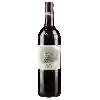
Winery Johanès BoubéeChâteau Les Grands Champs
In the mouth this red wine is a powerful with a nice balance between acidity and tannins.
This wine generally goes well with poultry, beef or veal.
Taste structure of the Château Les Grands Champs from the Winery Johanès Boubée
Light | Bold | |
Smooth | Tannic | |
Dry | Sweet | |
Soft | Acidic |
In the mouth the Château Les Grands Champs of Winery Johanès Boubée in the region of Bordeaux is a powerful with a nice balance between acidity and tannins.
Food and wine pairings with Château Les Grands Champs
Pairings that work perfectly with Château Les Grands Champs
Original food and wine pairings with Château Les Grands Champs
The Château Les Grands Champs of Winery Johanès Boubée matches generally quite well with dishes of beef, veal or game (deer, venison) such as recipes of caramelized beef with onions, sot- l- leaves or venison stew to be prepared the day before.
Details and technical informations about Winery Johanès Boubée's Château Les Grands Champs.
Discover the grape variety: Aromella
Interspecific crossing between traminette and 34 Ravat obtained in 1976 by Bruce Reisch at the Experimental Station of Cornell University in Geneva (United States). It must be noted that this variety can only be found in a few American wine regions, which means that its multiplication is very limited. In France, it is almost unknown.
Informations about the Winery Johanès Boubée
The Winery Johanès Boubée is one of of the world's great estates. It offers 164 wines for sale in the of Bordeaux to come and discover on site or to buy online.
The wine region of Bordeaux
Bordeaux, in southwestern France, is one of the most famous, prestigious and prolific wine regions in the world. The majority of Bordeaux wines (nearly 90% of the production Volume) are the Dry, medium and Full-bodied red Bordeaux blends for which it is famous. The finest (and most expensive) are the wines of the great châteaux of Haut-Médoc and the right bank appellations of Saint-Émilion and Pomerol. The former focuses (at the highest level) on Cabernet Sauvignon, the latter on Merlot.
The word of the wine: Tartar (deposit)
White, chalky deposits that occur as a result of precipitation inside bottles and are often considered by consumers as a defect. They are in fact tartaric salts formed by tartaric acid, potassium and calcium naturally present in the wine. This deposit does not alter the quality of the wine and can be eliminated by a simple decanting.














